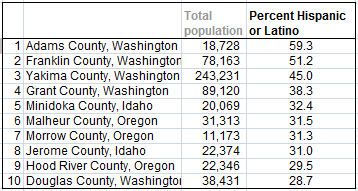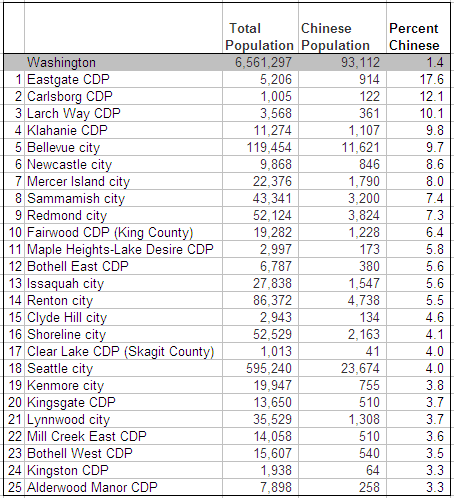The Northwest is home to more than 1.4 million people who self-identify as Hispanic or Latino. In this installment of my ongoing analysis of the region’s demographics we’ll take a closer look at the geography associated with Northwest Latinos. (Past examinations have included Chinese American and black residents.)
Overall, the three Northwest states have remarkably similar shares of Latino residents. Oregon’s population is 11.7 percent Hispanic, compared with 11.2 percent in both Idaho and Washington. In British Columbia, by contrast, less than 1 percent of residents claim Latino heritage.
Uniquely among Northwest jurisdictions, Washington has more than a dozen municipalities with overwhelmingly Hispanic populations.
All of Washington’s majority-Latino cities and towns lie to the east of the Cascade Mountains. Cities on the western Columbia Plateau (Mattawa, Royal City, Warden, Othello, and Quincy) and cities in the lower Yakima Valley (Mabton, Granger, Wapato, Toppenish, Sunnyside, and Grandview) dominate the rankings. With the exception of Pasco, all of Washington’s majority-Latino places are small towns.




